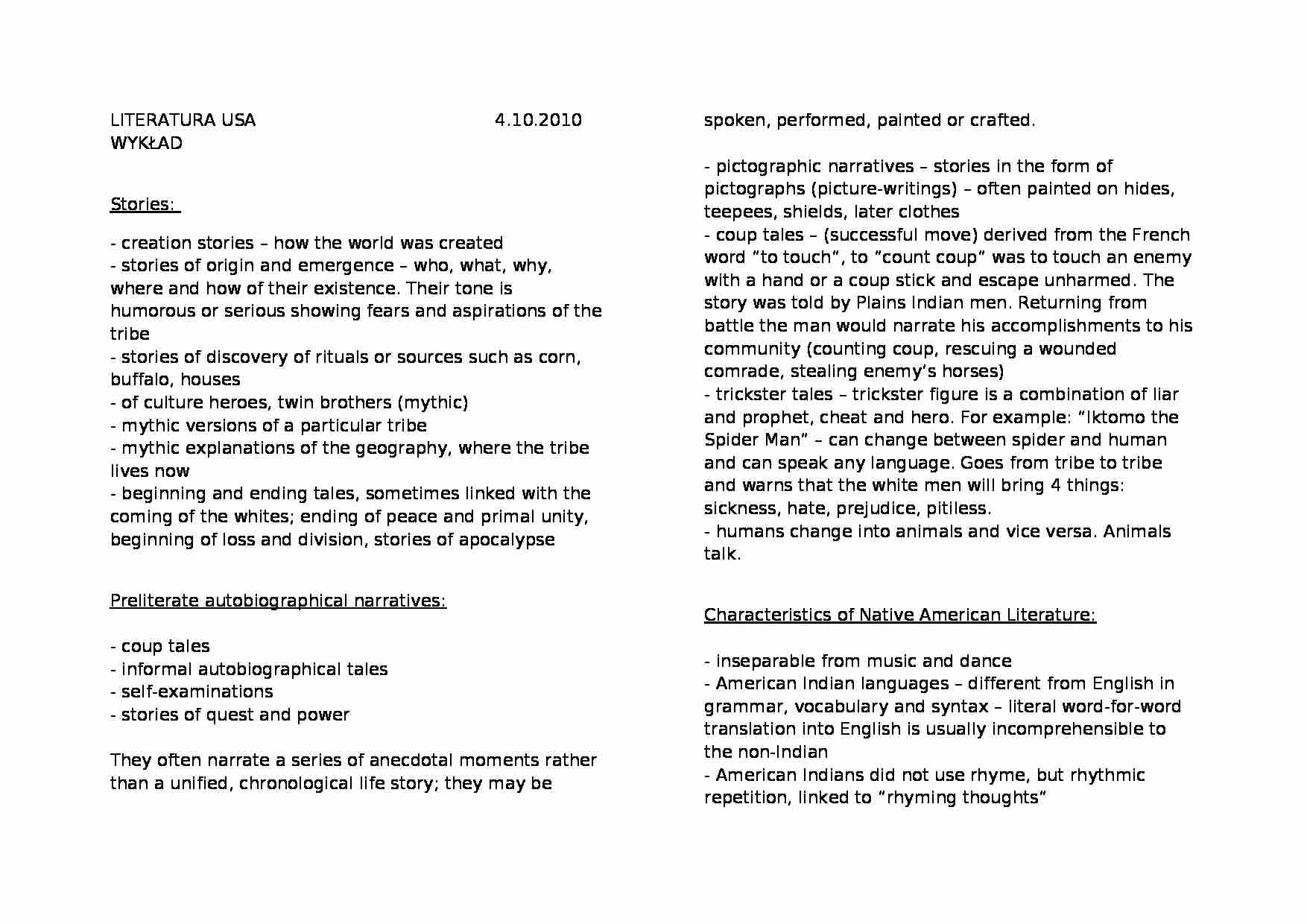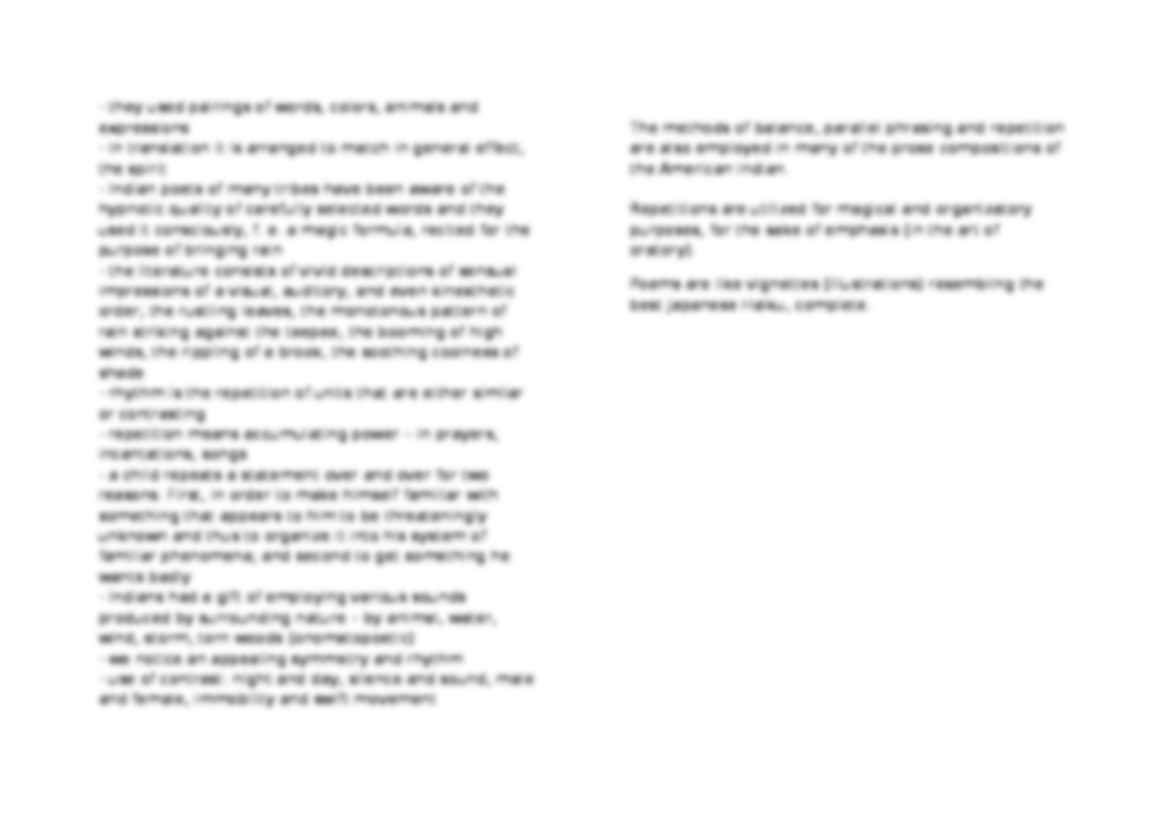LITERATURA USA 4.10.2010 WYKŁAD Stories: - creation stories - how the world was created - stories of origin and emergence - who, what, why, where and how of their existence. Their tone is humorous or serious showing fears and aspirations of the tribe - stories of discovery of rituals or sources such as corn, buffalo, houses - of culture heroes, twin brothers (mythic) - mythic versions of a particular tribe - mythic explanations of the geography, where the tribe lives now - beginning and ending tales, sometimes linked with the coming of the whites; ending of peace and primal unity, beginning of loss and division, stories of apocalypse Preliterate autobiographical narratives: - coup tales - informal autobiographical tales - self-examinations - stories of quest and power They often narrate a series of anecdotal moments rather than a unified, chronological life story; they may be spoken, performed, painted or crafted. - pictographic narratives - stories in the form of pictographs (picture-writings) - often painted on hides, teepees, shields, later clothes - coup tales - (successful move) derived from the French word “to touch”, to “count coup” was to touch an enemy with a hand or a coup stick and escape unharmed. The story was told by Plains Indian men. Returning from battle the man would narrate his accomplishments to his community (counting coup, rescuing a wounded comrade, stealing enemy's horses) - trickster tales - trickster figure is a combination of liar and prophet, cheat and hero. For example: “Iktomo the Spider Man” - can change between spider and human and can speak any language. Goes from tribe to tribe and warns that the white men will bring 4 things: sickness, hate, prejudice, pitiless. - humans change into animals and vice versa. Animals talk. Characteristics of Native American Literature: - inseparable from music and dance - American Indian languages - different from English in grammar, vocabulary and syntax - literal word-for-word translation into English is usually incomprehensible to the non-Indian - American Indians did not use rhyme, but rhythmic repetition, linked to “rhyming thoughts” - they used pairings of words, colors, animals and expressions - in translation it is arranged to match in general effect, the spirit - Indian poets of many tribes have been aware of the hypnotic quality of carefully selected words and they used it consciously, f. e. a magic formula, recited for the purpose of bringing rain - the literature consists of vivid descriptions of sensual impressions of a visual, auditory, and even kinesthetic order; the rustling leaves, the monotonous pattern of rain striking against the teepee, the booming of high winds, the rippling of a brook, the soothing coolness of shade - rhythm is the repetition of units that are either similar or contrasting
(…)
… contrasting - repetition means accumulating power - in prayers, incantations, songs - a child repeats a statement over and over for two reasons. First, in order to make himself familiar with something that appears to him to be threateningly unknown and thus to organize it into his system of familiar phenomena; and second to get something he wants badly - Indians had a gift of employing various sounds…
... zobacz całą notatkę




Komentarze użytkowników (0)